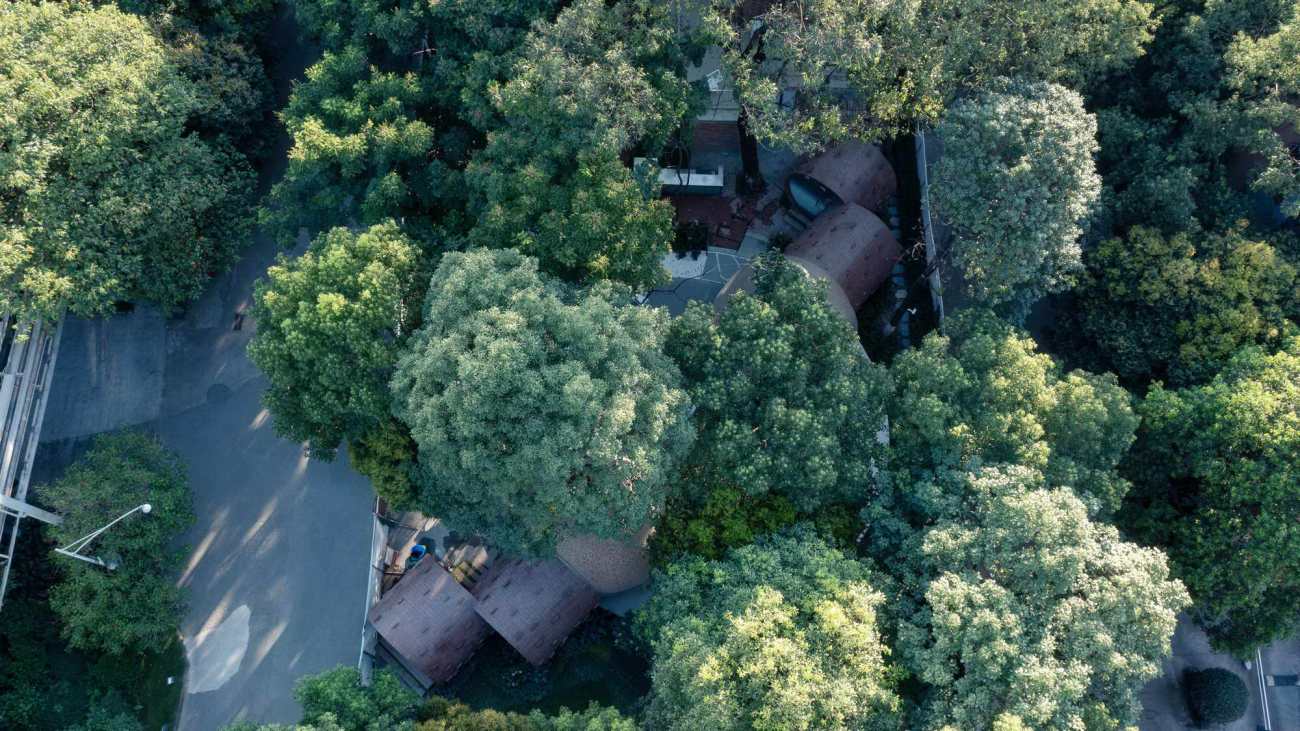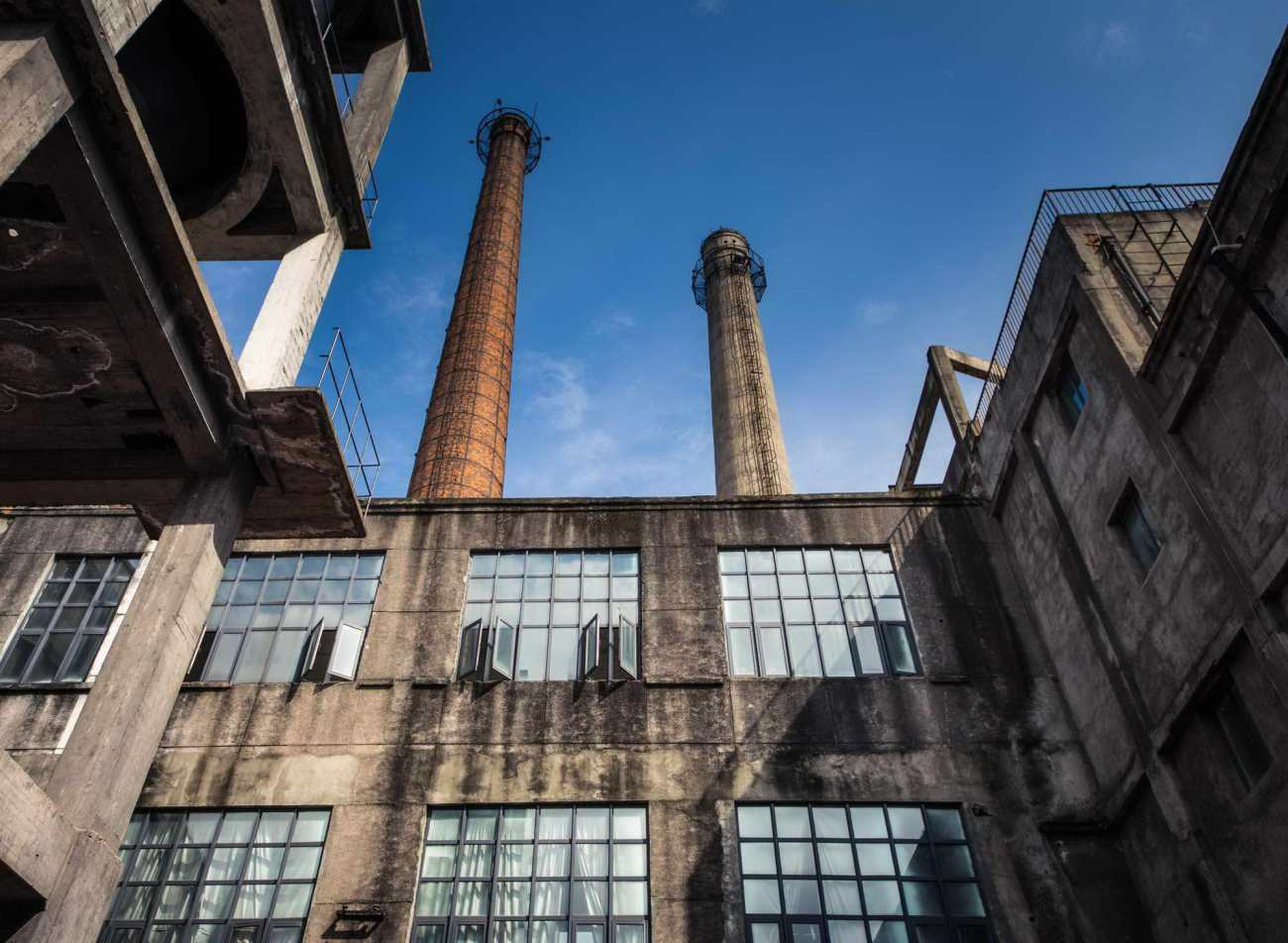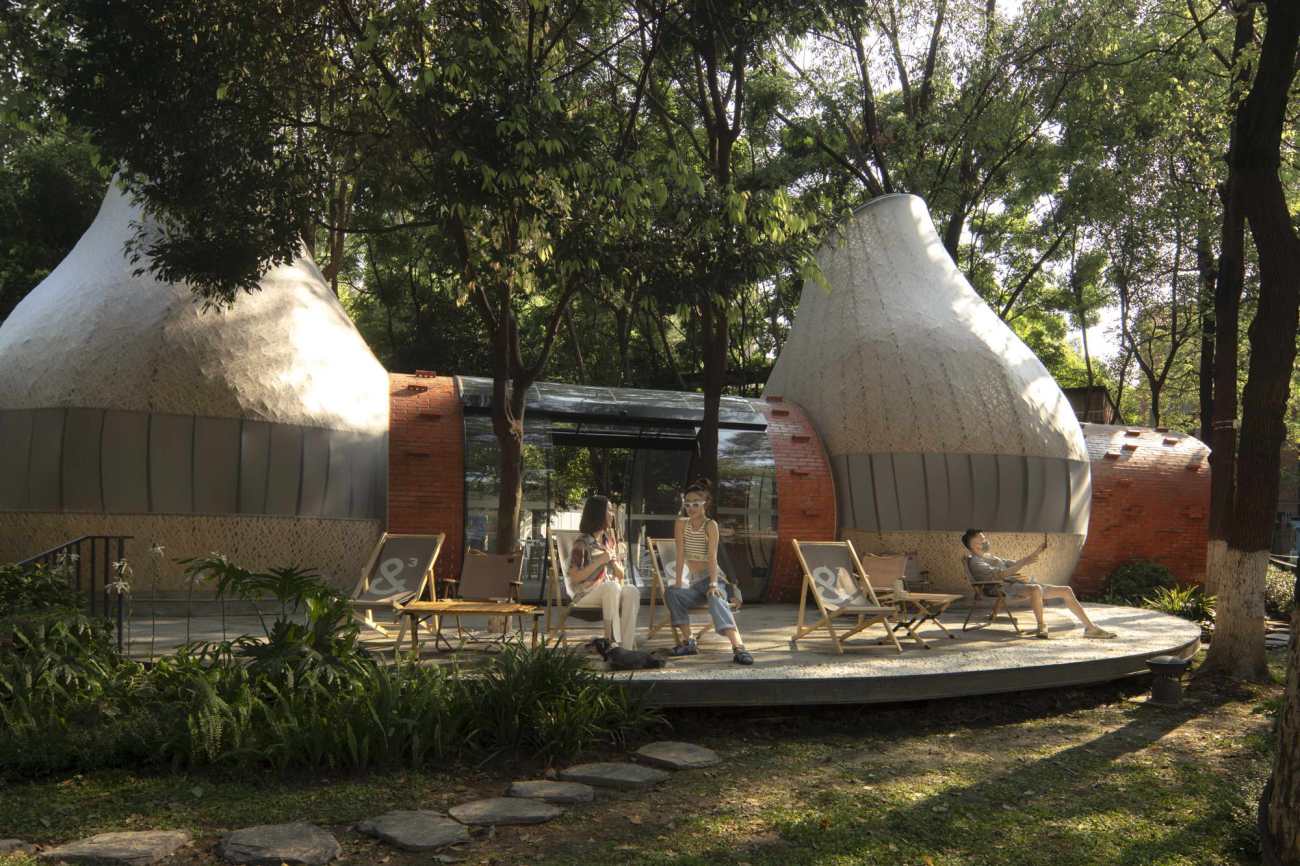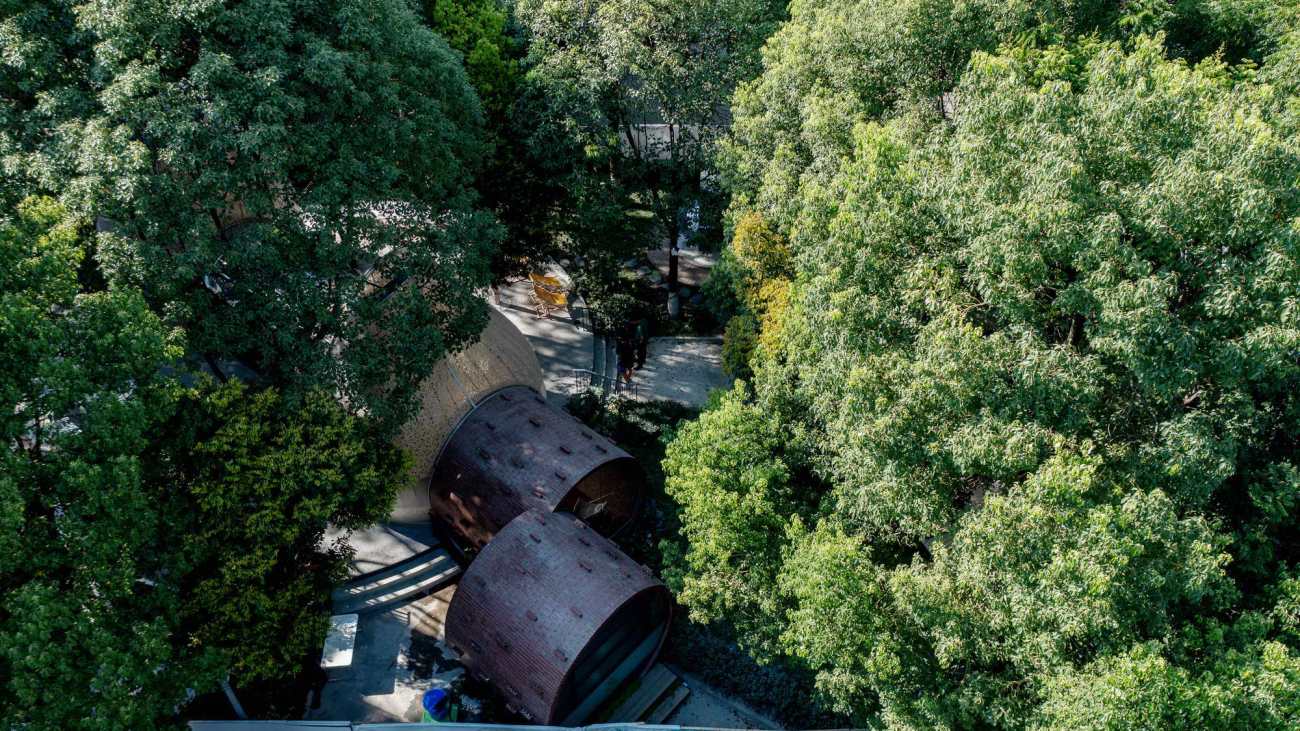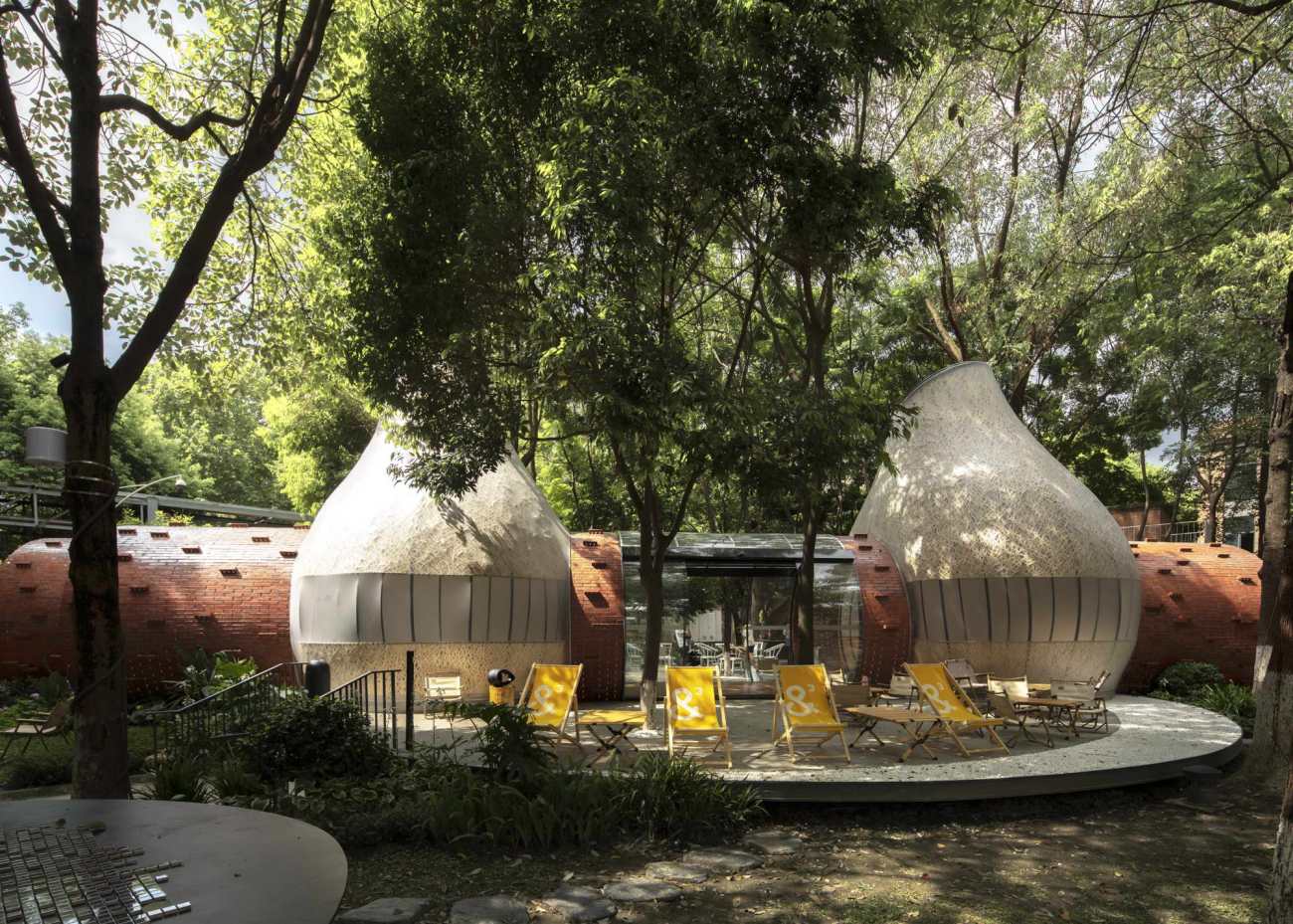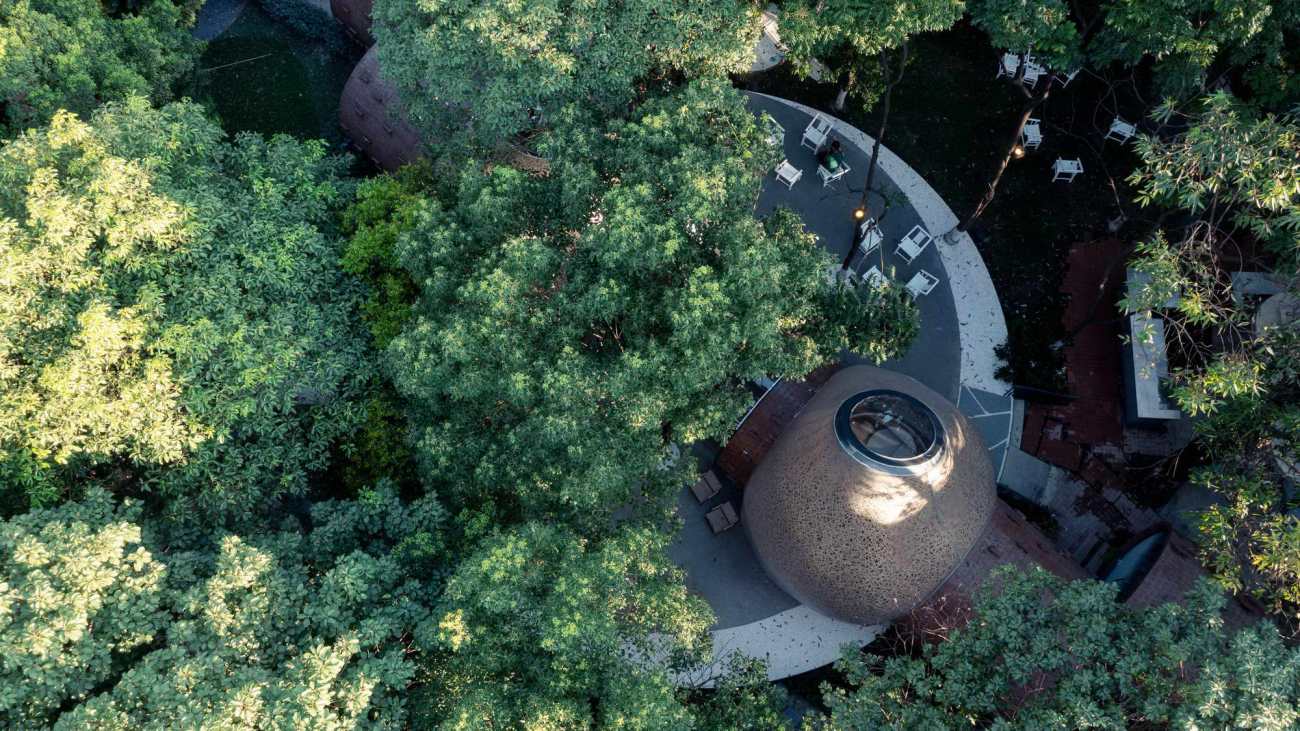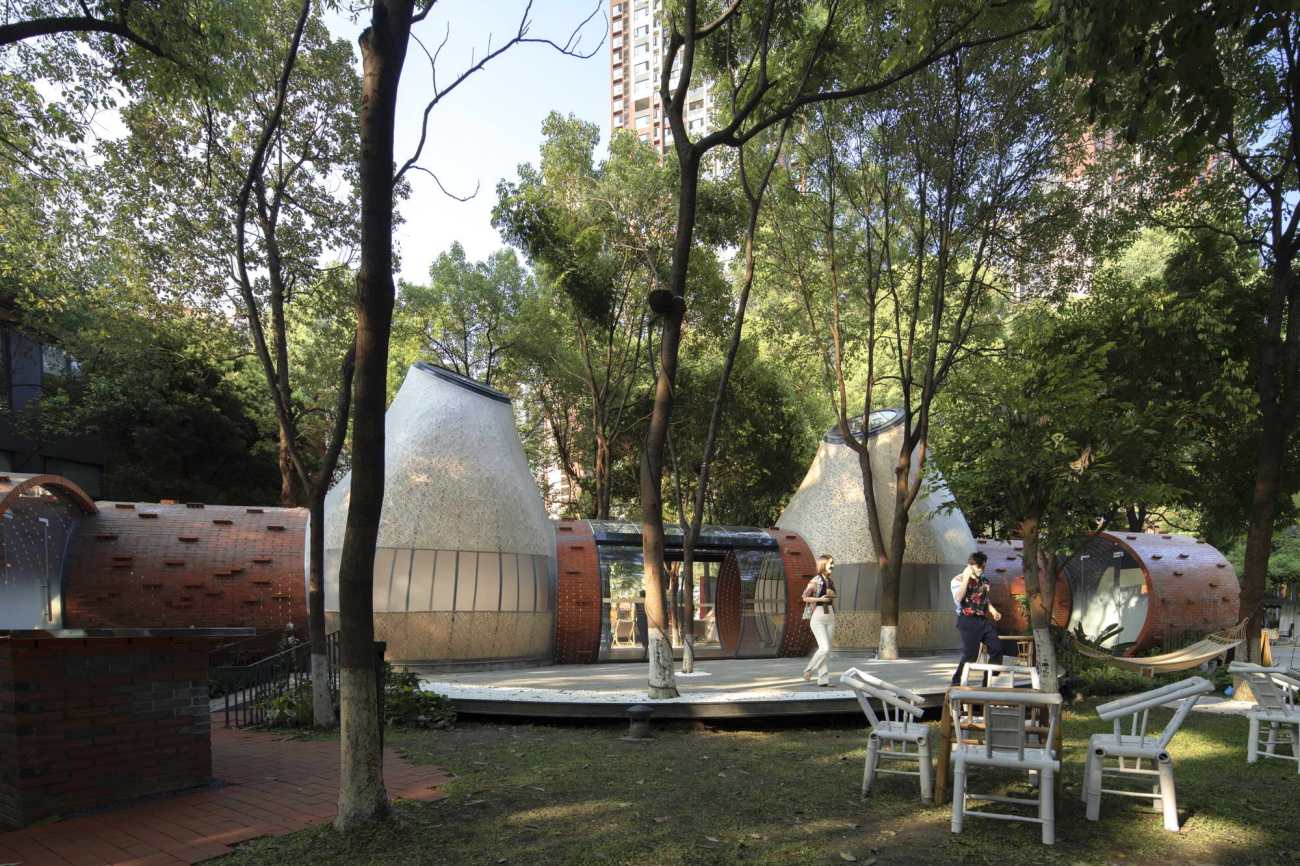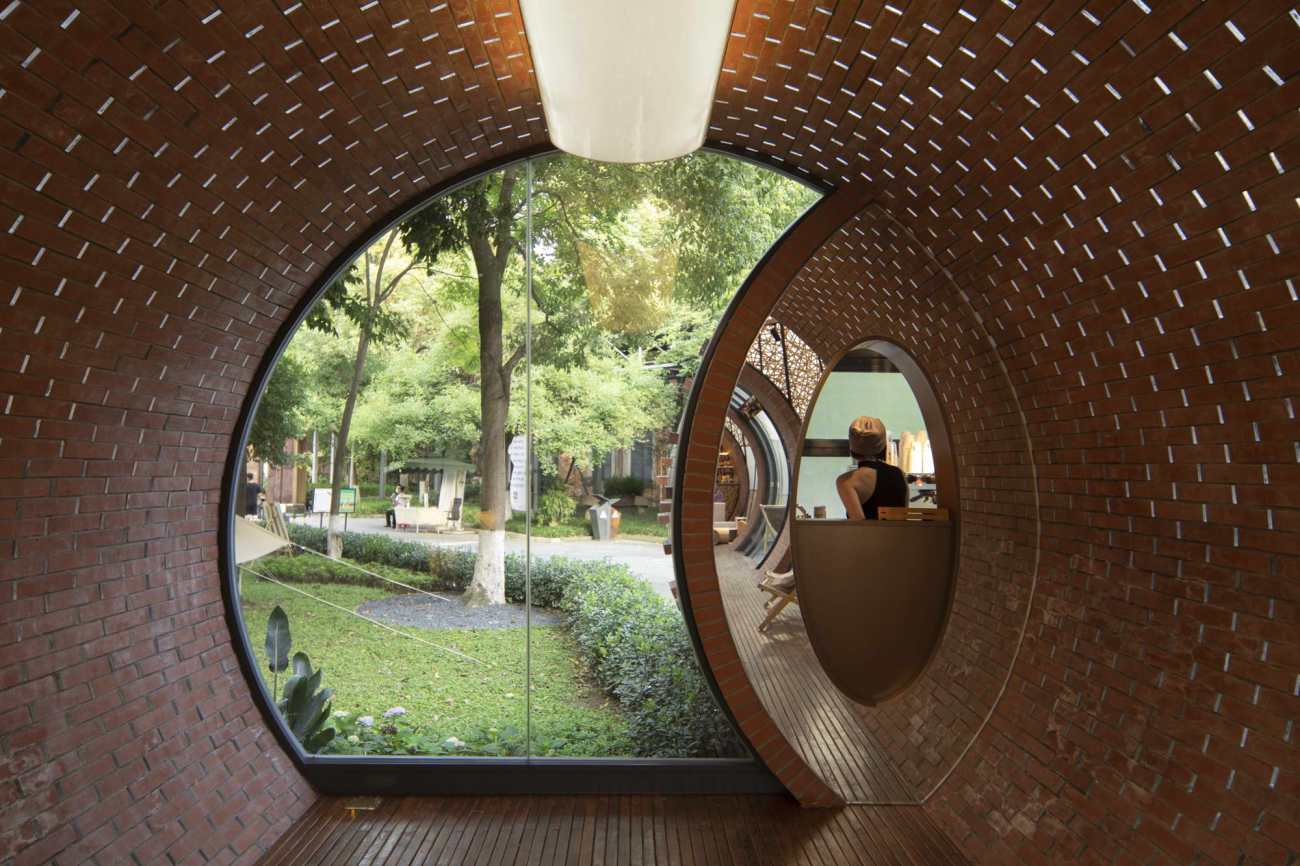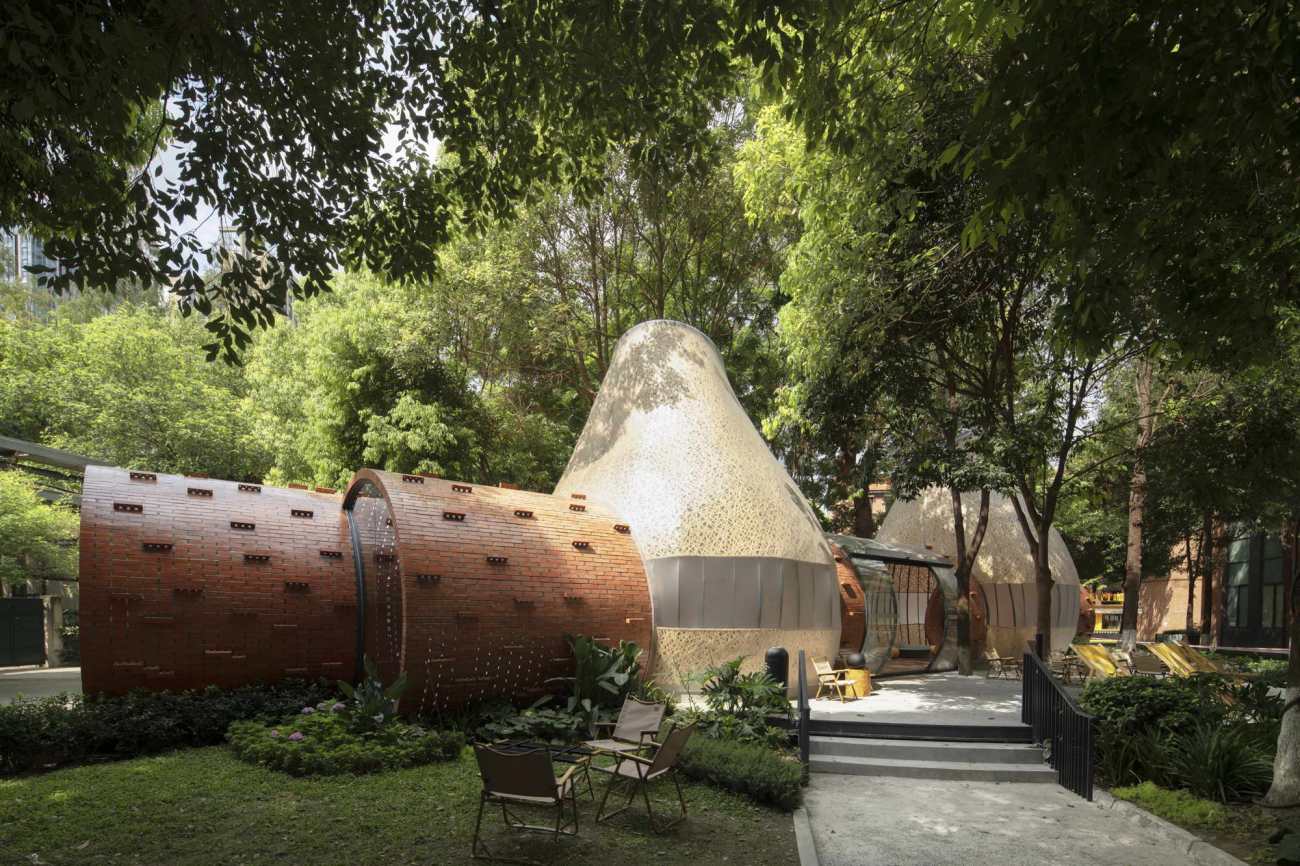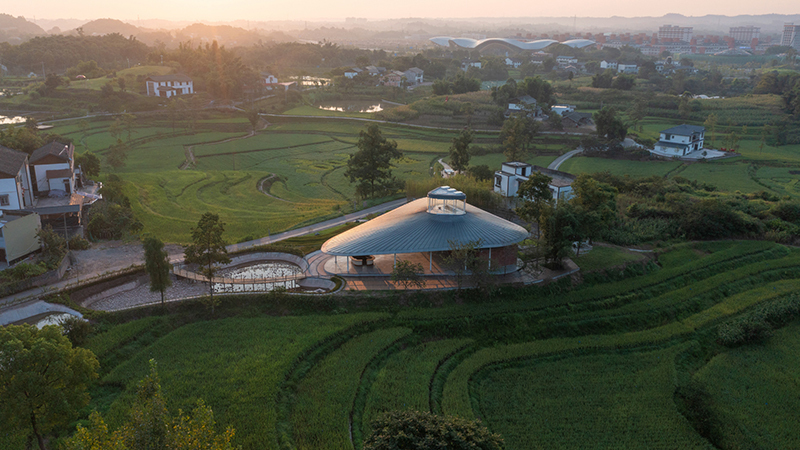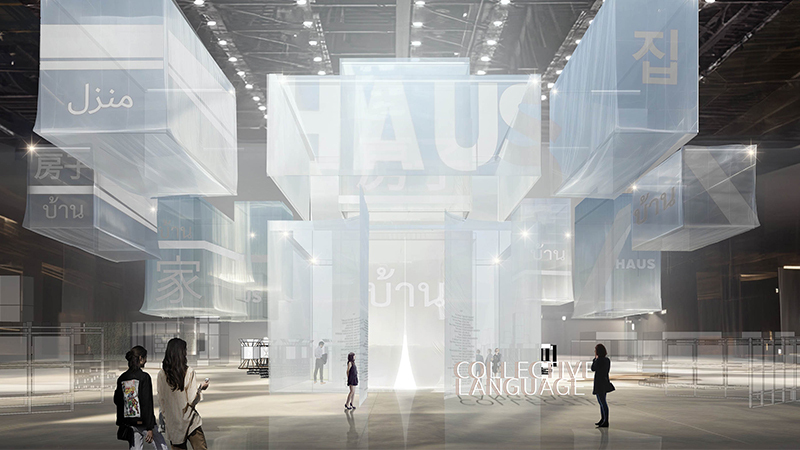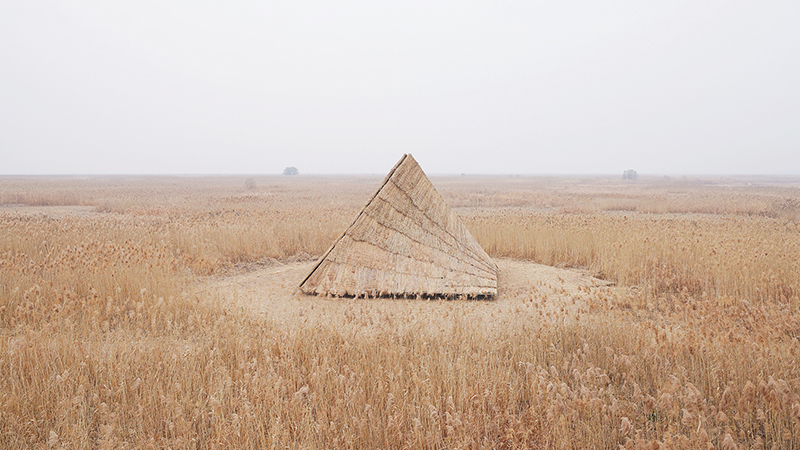缘起东郊厂区和基地原有特征
Origins from Eastern Suburbs Industrial Park and the original features of the site
东郊记忆缘起是在原国营红光电子管厂旧址上改建而成,位于成都市成华区东二环外侧的原老工业区。东郊记忆是成都东区音乐公园,集合音乐、美术、戏剧、摄影等文化形态的多元文化园区,作为工业时代遗留的产物,它完整地保留了几代人熟悉的厂房记忆。
Dongjiao Memory was converted from the former site of the state-owned Hongguang Electronic Tube Factory, located in the former old industrial area on the outer side of the East Second Ring Road in Chenghua District, Chengdu. Dongjiao Memory is a music park in the eastern part of Chengdu, a multicultural park that brings together music, art, theatre, photography, and other cultural forms; as a legacy of the industrial era, it perfectly retains the factory memories familiar to the generations.
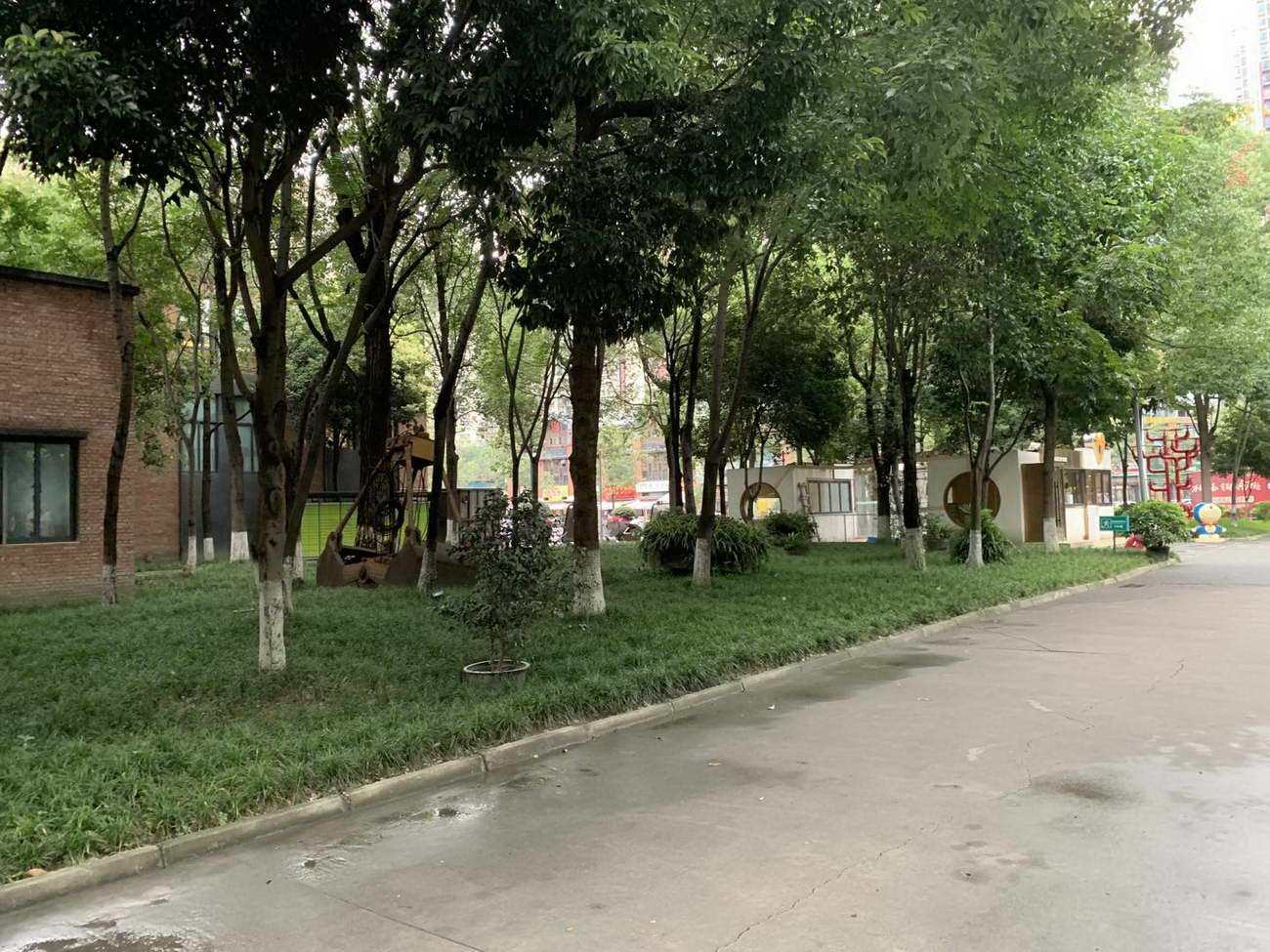 |  | 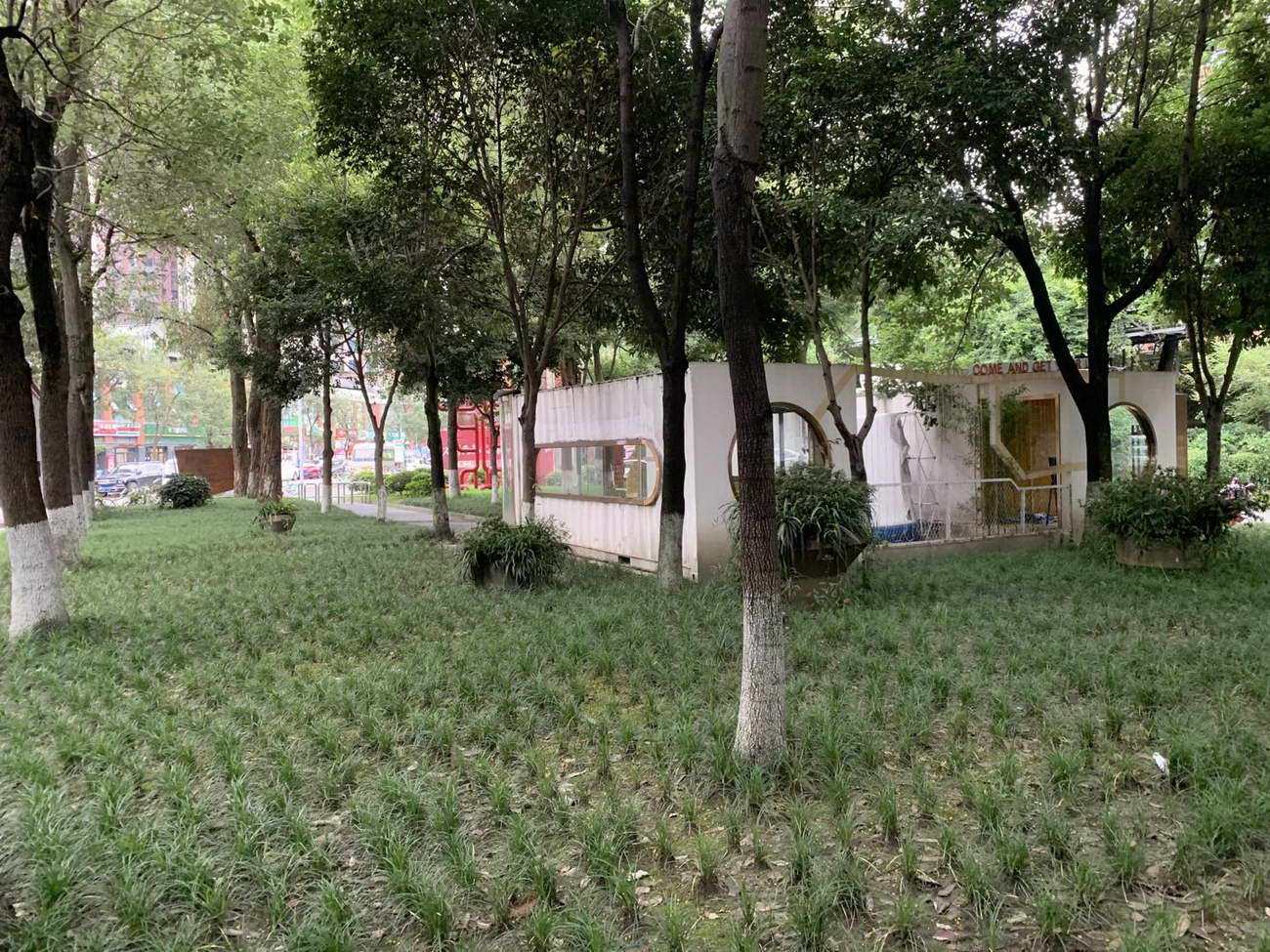 |
△基地原状
△建成后鸟瞰
董小姐与马丁公共艺术空间就坐落在东大门入口处。外围面向商业街。该区域视角既能延伸到外围街道,又能贯穿到厂区。场地被高密度的树林所覆盖,景观通透度并不高,为保留现有树木,在建筑场地的选择上,对所有原有树木进行了避让,尽可能在限有空间,去展现街道与厂区的最大视觉面,呼应出建筑在林荫下和周围环境的关系。
Miss Dong and Martin’s public art space is located at the entrance to the East Gate. The periphery faces the commercial street. The view of the area extends not only to the outer streets but also through to the factory. The site is covered by high-density woods and the transparency of the landscape is not very high. To preserve the existing trees, all the original ones were avoided when selecting the building site. In this sense, not only the largest visual aspect of the streets along with the factory area can be illustrated, but the relation between the building under the tree shade and the surrounding environment can also be further echoed.
△设计策略
轻介入和环境
Light interventions and environment
在一片工业遗址和茂密树林之间,最开始的设计态度就是以少的物质介入和轻的构造措施来搭建一种熟悉而陌生的情境。功能业态、材料选择、构造措施和形成的简洁形态都围绕轻介入的策略展开。砖的搭接顺应拱形受力形成的桶形单元,围合起线性路径空间;手工的竹编以自然活泼的形态支撑起的泡状膜团,串联起砖制的桶形单位,并成为放大的节点空间。桶形单元暗合着工业厂区特有的“烟囱”元素,通过“烟囱”圆筒形态复刻厂区曾经的记忆,使得项目在设计中与东郊园区文化一脉相承。圆筒代表着厂区烟囱的记忆和新空间的重生,旧与新的合并,重新组合演绎,阐述着对过去的致敬与积极重生的向往。建筑通过一个架空“托盘”把建筑形体层次丰富起来,使得建筑在场地内更加轻巧灵动。场地原生树木的保留很自然营造了老成都人的市井院坝文化空间氛围,让它与现代生活进行串联,最终呈现在当下的新时尚与新风尚的审美空间。
Between an industrial site and a dense forest, the initial design attitude is to build a familiar but different context with minimal material interventions and light construction measures. The functional form, the choice of materials, the tectonic measures, and the resulting simple forms all revolve around a strategy of light intervention. The barrel-shaped units formed by the lap of the bricks in response to the forces of the arches enclose the linear path space; the vesicular membrane masses supported by the natural and lively form of the handmade bamboo weaving link the brick barrel-shaped units, becoming amplified nodal spaces. The barrel-shaped units allude to the unique "chimney" element of the industrial plant area and reproduce the memories of the plant site through the cylindrical shape of the "chimney", making the design of the project in line with the original culture of the Eastern Suburbs Industrial Park. The cylinder represents the memory of the factory's chimney and the rebirth of the new space, a merging of the old and the new, reassembled and interpreted as a tribute to the past and a yearning for positive rebirth. The building is enriched by an elevated 'tray', which makes the building lighter and more dynamic within the site. The preservation of the site's native trees naturally creates a spatial atmosphere of the old Chengdu courtyard culture, linking it to modern life and ultimately demonstrating a new fashionable aesthetic space in the present.
对这些工业元素加以转化,在尺度、空间组合方式上又有别于传统、适应于文化、艺术等公共艺术要求,承载“和而不同,中庸之道”的哲学。
These industrial elements are transformed, but in terms of scale and spatial combination, they are different from traditional ones, adapted to the requirements of culture, art, and other public art design, carrying the philosophy of "the doctrine of the mean and harmony in diversity, but not uniformity”.
利用场地原生树林下仅存的区域,重新对场地进行梳理。把“烟囱”进行切割重组,同时把竹编空间融入其中,但用临时性来界定竹编空间,表皮及空间随着环境时间改变重组出一个个符合不同时下审美的新生空间。
The site has been reorganised by using the only remaining areas under the native woods. The 'chimney' is cut and reorganised, while the bamboo weaved space is integrated into it, but defined temporarily, with the surface and space reorganised over time to create a new space that meets the aesthetics of the different times.
对场地有效切割,增强内外空间的交互,使得树林与空间相融。建筑中部核心区域的透明采光体块完成空间交汇,同时激活内外场地的功能需求。
The effective cutting of the site enhances the interaction between internal and external spaces, allowing the woods to merge with the space. A transparent light block in the central core of the building completes the spatial intersection while activating the functional needs of the internal and external sites.
平台抬升协调了与道路的景观视角,同时解决机电设备通道和建筑防潮功能的作用。竹编空间通过竹编非遗技艺手法进行编织,既具展示了老川西坝子的生活记忆,科技膜材的使用,又体现了当代城市的时尚活力。
The platform is raised to harmonise the view from the road while playing the role of the mechanical and electrical equipment access and the building's damp-proof function. The bamboo weaving space is woven through the nonphysical cultural heritage technique, showing the memories of life in the old western Sichuan plain area; the use of technological building membranes reflects the fashionable vitality of the contemporary city.
材料 - 砖、竹呈现的不同透明性
Materials - Brick, bamboo with different transparency
在材料的选择上,清水陶砖构建圆形空间结构。形成工业感的外墙立面,在通过清水陶砖与透明亚克力的结合,形成了现代元素与传统元素的冲突与碰撞。
With regards to the choice of materials, the clear water ceramic bricks build a circular spatial structure to form an industrial feeling facade, and then through the combination of clear water ceramic bricks and transparent acrylic, a clash and collision of modern and traditional elements are formed.
 |  |  |
中部竹编空间是竹编和膜材组合表皮。竹编原有是日常生活用材,而从生活用材演变到装饰用材再到次生结构用材,同时现代科技膜材介入运用。因而竹编次生结构给膜材提供了形态基础,膜材又保护了竹编次生结构,二者材料运用是对普通材料和科技材料一次全新尝试和新的实践。
The central bamboo weaved space is a combination of bamboo weave and membrane surface. Bamboo weave was originally a material for everyday use, but it has evolved from material for daily use to material for decoration and then to material for this secondary structure, while modern technological membrane materials have been used. The bamboo weave secondary structure thus provides the morphological basis for the membrane material, while the membrane material protects the bamboo weave secondary structure. The use of both materials is a new attempt and practice of common and technological materials.
 |  |

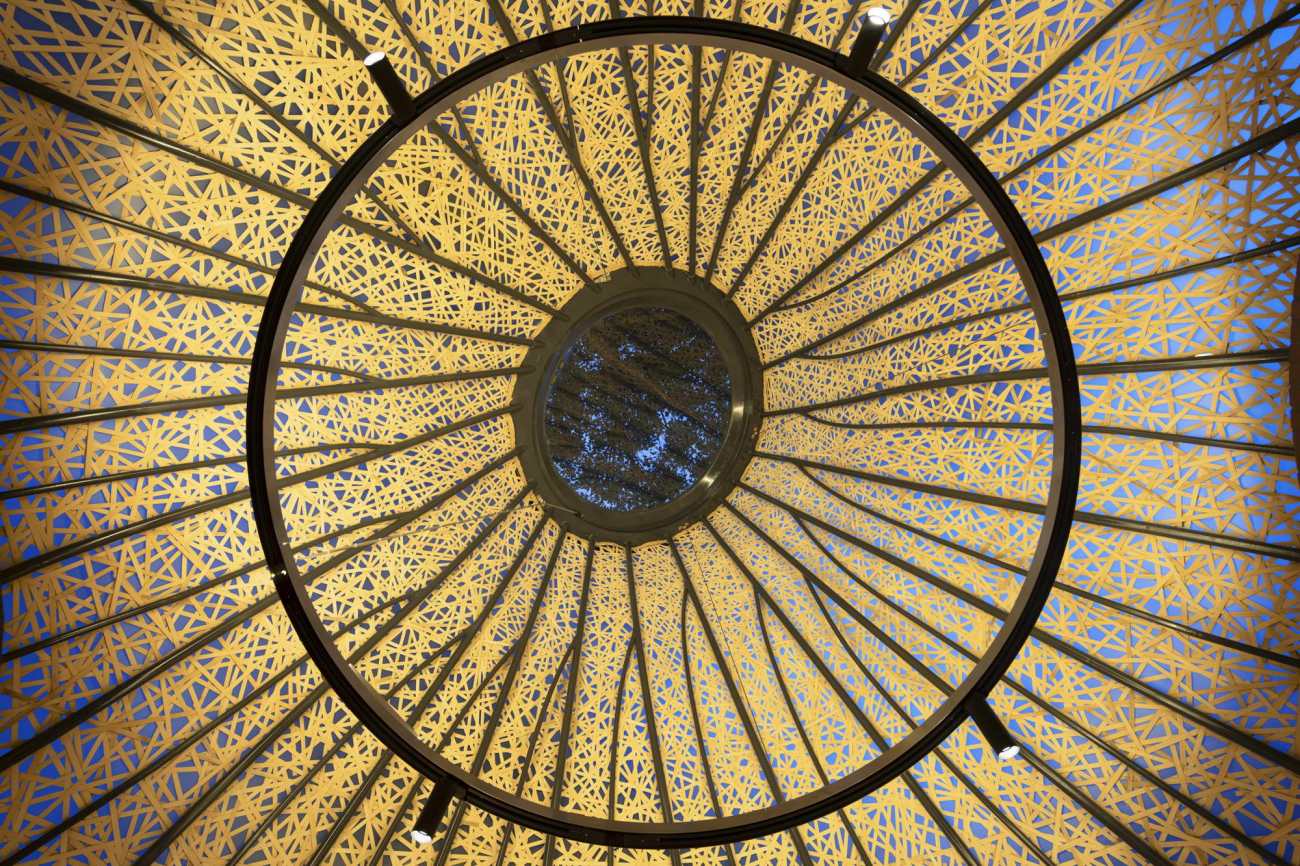
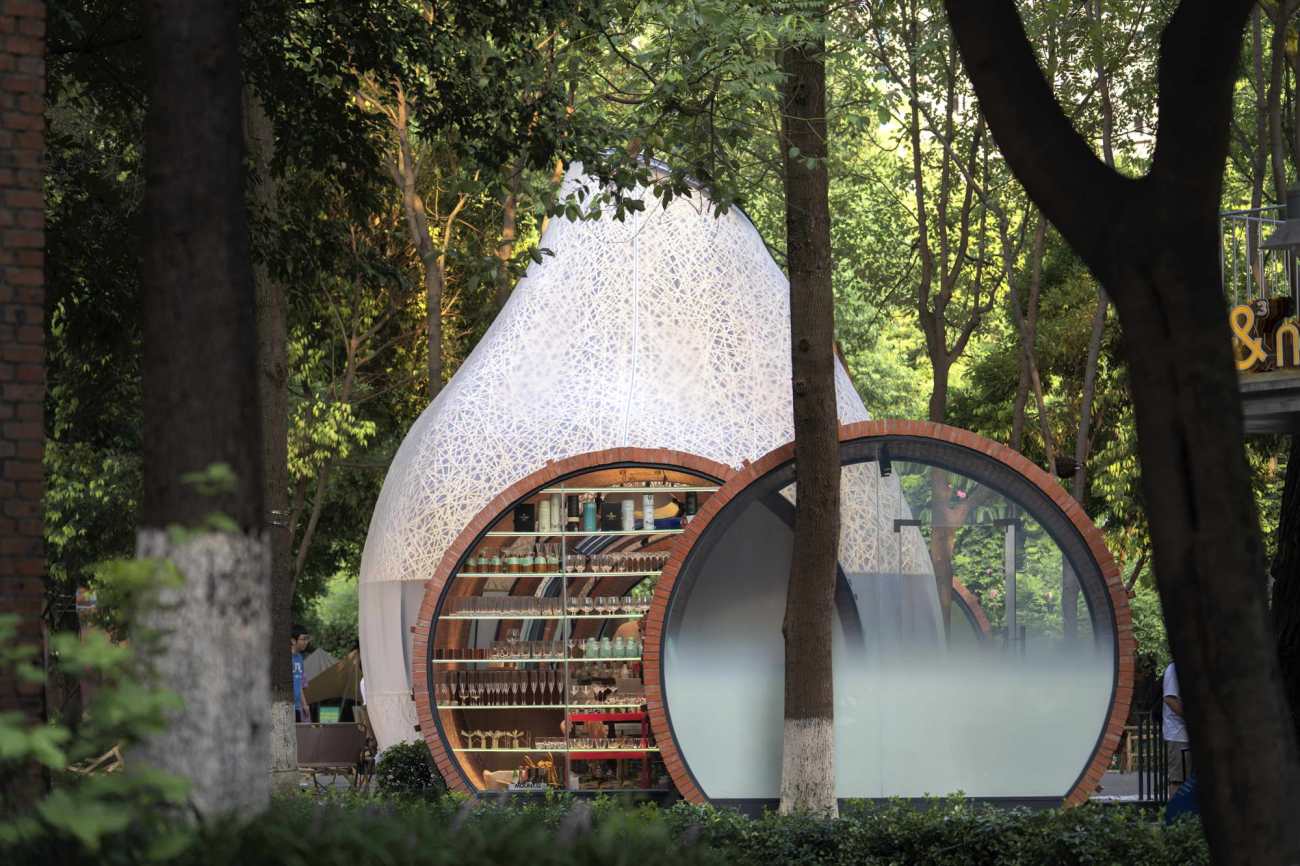
在整个结构语言中,清水陶砖、透明亚克力和竹编、膜材的运用,通过中间的玻璃管道进行链接形成从右至左不同的圆形式空间,完成相应室内功能的转换。砖筒的实与竹膜泡泡的透明性让两种截然不同的材料在这块场地和建筑呈现出刚柔并济的效果。
In the whole structure, the use of clear water ceramic tiles, transparent acrylic, bamboo weaving, and membrane materials, through the middle of the glass pipe to link the formation of different round forms of space from right to left, completed the transformation of the corresponding interior function. The solidity of the brick cylinders and the transparency of the bamboo membrane bubble create a combination of hardness and softness on this site and building, although they are two distinctly different materials.
快闪和“临时性”是业态层面对轻介入策略的另一种体现。顺应周边音乐节潮汐般的人流,空间的经营方式也会随着做一些改变。砖形筒仓、竹编的泡泡单元和被树林包合的室外露台,因为不同人的参与呈现出完全不同的空间状态。明与暗、实与透的灯光掩映下,建筑与人潮、树林汇集成一种新的“自然”。
The Flash and temporality are other manifestations of the light intervention strategy at the commercial activity level. In response to the tidal wave of people that surrounds the music festival, the way the space operates will also change. The brick silos, the bamboo bubble units, and the outdoor terraces surrounded by woods demonstrate a completely different spatial state because of the involvement of different people. The light and dark, solid and translucent lighting bring the building, the people, and the trees together into a new 'nature'.
轻介入的策略决定了轻的材料选择、灵活地场地布局和临时性的业态设置,发挥材料特性的形态回应了场地历史特征和独特的空间体验。
The light intervention strategy determines the choice of light materials, the flexible site layout, and the temporary business settings. The forms that play on the characteristics of the materials respond to the historical characteristics of the site and the unique spatial experience.
△总平面图
△平面图
△侧立面图
△正立面图
项目名称:董小姐和马丁公共艺术空间
Project Name: Miss Dong and Martin Public Art Space
项目地址:成都东郊记忆园区
Project Location: Chengdu Dongjiao Memory Park
设计公司:成都在行建筑设计事务所
Design Company: Chengdu Zaixing Architectural Desgin Firm
主持建筑师:温钦皓
The Chief Architect: Wen Qinhao
设计团队:温钦皓 孔锐 宋柏林 许世勇 黄婷 黄文浩 沈明阳
Design Team: Wen Qinhao, Kong rui, Song Bolin, Xu Shiyong, Huang Ting, Huang Wenhao, Shen Mingyang
景观团队:梦景未来DDM
Landscape Team: Dream Design Master Co., Ltd
灯光顾问:麓米照明设计(上海)有限公司
Lumia Lab (Shanghai) Co. Ltd
竹编协作:四川道明竹艺产业发展有限公司
Bamboo Weaving Team: Sichuan Daoming Bamboo Art Industry Development Co..Ltd
建筑面积:230平方米
Building Area:230
设计时间:2020.10
Design Date: 2020.10
建筑状态:建成
Construction Status: Completed
结构形式:陶砖拱圈结构
Structural Form: Ceramic brick arch circle structure
主要材料:清水陶砖 竹编 PVC膜 玻璃 钢
Main Materials: Clearwater ceramic bricks, bamboo weaving, PVC membrane, glass, steel
摄影师:存在摄影
Photographer: Arch-Exist
编辑: FreyaLee 邓永平
Editor: FreyaLee Deng Yongping
更新日期:2021-11-17 17:08:07
非常感谢 在行建筑设计 带来的精彩项目, 查阅更多Appreciations towards Zaixing Architectural Desgin for sharing wonderful work on hhlloo. Click to see more works!


